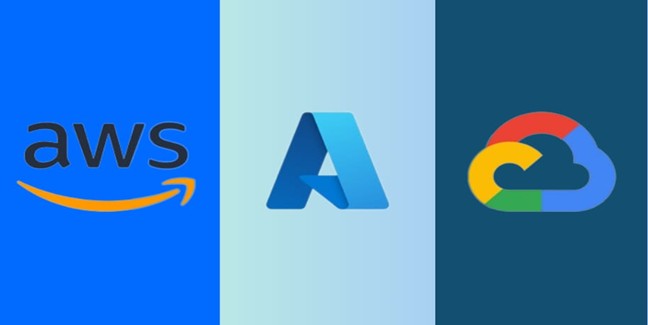
Cloud computing is no longer just a back-end utility, it is the catalyst of Digital Transformation. Starting from supporting interactive AR/VR functionality to fuelling intelligent automation, cloud platforms are reshaping the functioning of businesses. In this blog, we will present the most significant cloud computing trends of 2025 so that businesses can prepare to transform and are aware of what is next.
1. Increasing Demand For Hybrid Cloud Deployments :
One of the most pervasive cloud computing trends of 2025 is the increasing adoption of hybrid cloud models. Businesses are no longer being forced to adopt either private or public clouds—they’re choosing to use both at the same time. This two-pronged adoption provides businesses with greater flexibility, improved security and improved performance across operations.
Hybrid cloud solutions offers:
• Decreased latency for real-time AR/VR experiences
• Enhanced data residency and compliance management
• Smart cost control with optimal workload distribution
Industry segments like healthcare, gaming and retail are increasingly embracing hybrid cloud models to provide real-time services without sacrificing data integrity. Being able to keep sensitive data on-premise with security and taking advantage of the scale of the public cloud for less sensitive process has been a smart decision. With increasing expectations of personalisation and real-time responsiveness, hybrid cloud deployment is increasingly becoming a necessity, not a luxury.
2. AI-Powered Cloud Infrastructure Is Conquering
The most groundbreaking cloud computing trend for 2025 is potentially the coming together of AI and automation profoundly in cloud infrastructure. Together, these two technologies are revolutionizing and it’s making cloud environment smarter, more responsive and more optimized than ever before.
Cloud platforms now offer:
• Predictive analytics that enables foresight decision-making
• Self-healing infrastructure reducing downtime and improving system health
• Extremely low latency, highly trustworthy cloud-rendered AR/VR services
All this is due to these innovations, as they enable businesses to shift their focus away from manual optimisation and back to fundamental innovation. With cloud infrastructure taking care of performance and scalability in the background, businesses can concentrate on product development, customer engagement and strategic planning. This is especially useful for startups and medium-sized businesses that lacks big IT departments but still need enterprise-level performance.
3. AWS Versus Azure Versus Google Cloud: 2025 Strategic Differentiation
The battle between AWS vs Azure vs Google Cloud is still on the rise in 2025. But the choice no longer rests on brand name or cost. Nowadays, it all boils down to strategic fit—how well a platform fits an organisation’s particular objective and infrastructure requirements.
This is how the big three stack up:
• AWS continues to dominate with unparalleled global infrastructure and is best suited for businesses that needs to scale fast.
• Azure, being well entrenched in the Microsoft ecosystem, is an option for those already invested in Microsoft tools and seeking to create seamless hybrid cloud solutions.
• Google Cloud is leading in AI/ML innovation and hence it is the ideal option for high-end analytics, real-time data processing and research-driven use cases.
For companies looking to build AR/VR platforms, streamline intricate processes or tap into machine learning, a proper cloud partner selection requires a more intensive analysis of what these platforms are capable of producing. Business executives are now being asked to dig deeper than superficial comparisons of features and allocating each cloud option to their technology and operations plan.

4. Sustainability Pushes The Green Cloud To Emerge
Sustainability is not a catchphrase for corporate responsibility anymore—it’s a business necessity. Perhaps the single most important cloud computing trend in 2025 is the emergence of green cloud. With environmental regulations rising and customer expectations growing, cloud providers are reacting by investing in environmentally friendly infrastructure and energy-efficient technology.
Organisations can currently:
• Select carbon-efficient data centers with smaller environmental impact
• Monitor emissions with cloud-native sustainability dashboards
• Reducing their impact through serverless designs and dynamic scaling practices
Whether AWS, Azure or Google Cloud, all of these leading providers are playing their part for a greener future. Businesses are being urged to look beyond performance and cost and to think about how sustainable their use of the cloud really is.
Green strategies are not just good for the planet—they’re proving to be good for business too. Consumers and investors are increasingly aligning with environmentally responsible companies, and a cleaner cloud could be a competitive advantage in its own right.
The pace of innovation in the cloud in 2025 is disruptive and fast. To stay pertinent, organisations have to keep pace with the most impactful cloud computing trends of 2025—be it adopting hybrid cloud models, introducing AI, making the best choice between AWS vs Azure vs Google Cloud, or adopting sustainability in their cloud journey.
Those who move now won’t merely survive—they will thrive. Innovative companies will reap better performance, lower cost and higher customer engagement by using the right cloud platforms in the right ways. More importantly, they’ll be future-ready.
In a world where agility defines success, AffableTech leverages cloud-driven solutions to power smarter marketing, faster execution and scalable growth. Whether you’re starting out or scaling up, we’re here to reshape your digital journey—one bold move at a time. Reach out to know more !



